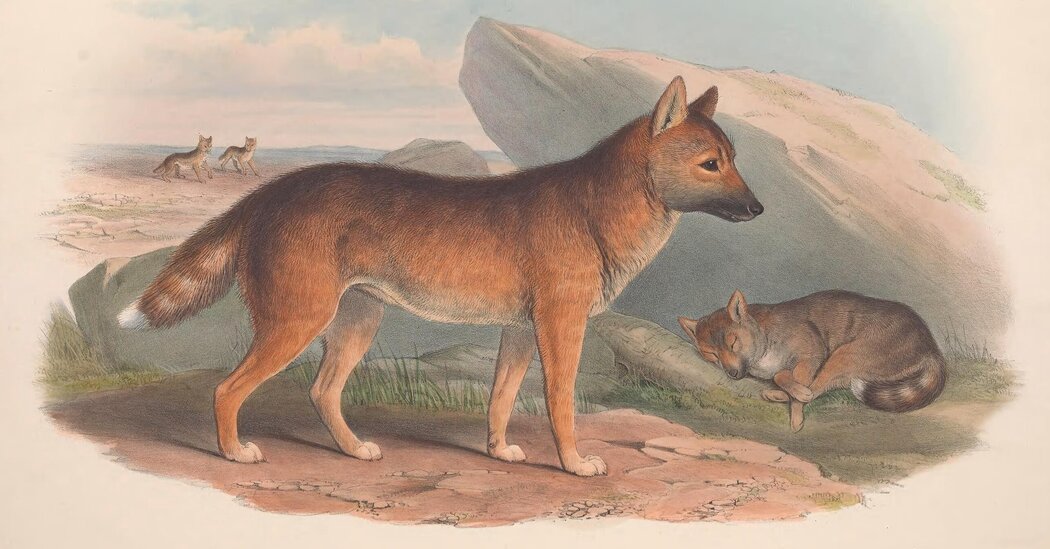Burial remains from 800-2,000 years ago hint that the First Australians may have kept the continent’s famous canine species as pets.
This article is part of our Pets special section on scientists’ growing interest in our animal companions.
Dingoes are muscular, graceful canids with pricked ears, bushy tails and teeth so pointy they look as if they have been put through a pencil sharpener. Rather than bark or howl, they give a long melancholy wail. They are wild in Australia but not really native, as they were brought to the continent at least 3,300 years ago, probably by Asian seafarers. At the time, Aboriginal peoples had already been living there for some 60,000 years.
Were dingoes domesticated or wild when they arrived in Australia? Were they descendants of pet dogs that turned feral on a new continent, or wolves on their way to becoming dogs that never got there? A clear consensus has long eluded the scientific community.
“The fundamental issue is what clues about the wild or domesticated nature of early dingoes could be found in the archaeological record,” said Pat Shipman, a professor emeritus in anthropology at Penn State University.
That record is the foundation of a paper published in October in the journal PLOS One that suggested that dingoes were trusted companions of Australia’s people well before the first dedicated European settlement in 1788.
Researchers examined the largely unstudied remains of no fewer than seven dingoes excavated from 1962 to 1966 at the Curracurrang Rock Shelter, just south of Sydney. Dating of the bones revealed that the animals were interred among, and at times alongside, humans as far back as 2,000 years ago. At another site noted in South Australia, the researchers noticed that dingoes were buried at the peripheries of human cemeteries, perhaps functioning as a barrier or protective ring, a scientist later suggested.
“In all tribal locations in which the burials are recorded, the process and methods of disposal are identical or almost identical to those associated with human rites in the same area,” said Loukas Koungoulos, an archaeologist at Australian National University and the lead author of the study, of the dingo burials. He and his colleagues found 19th- and 20th-century accounts of dingo “funerals” that featured variations on the Buddhist practice of “sky burial.”
